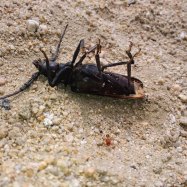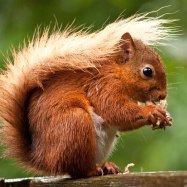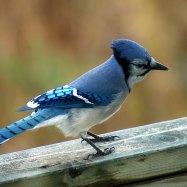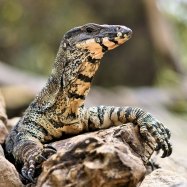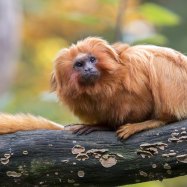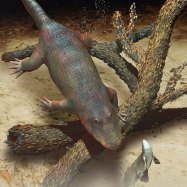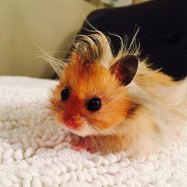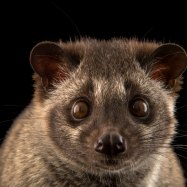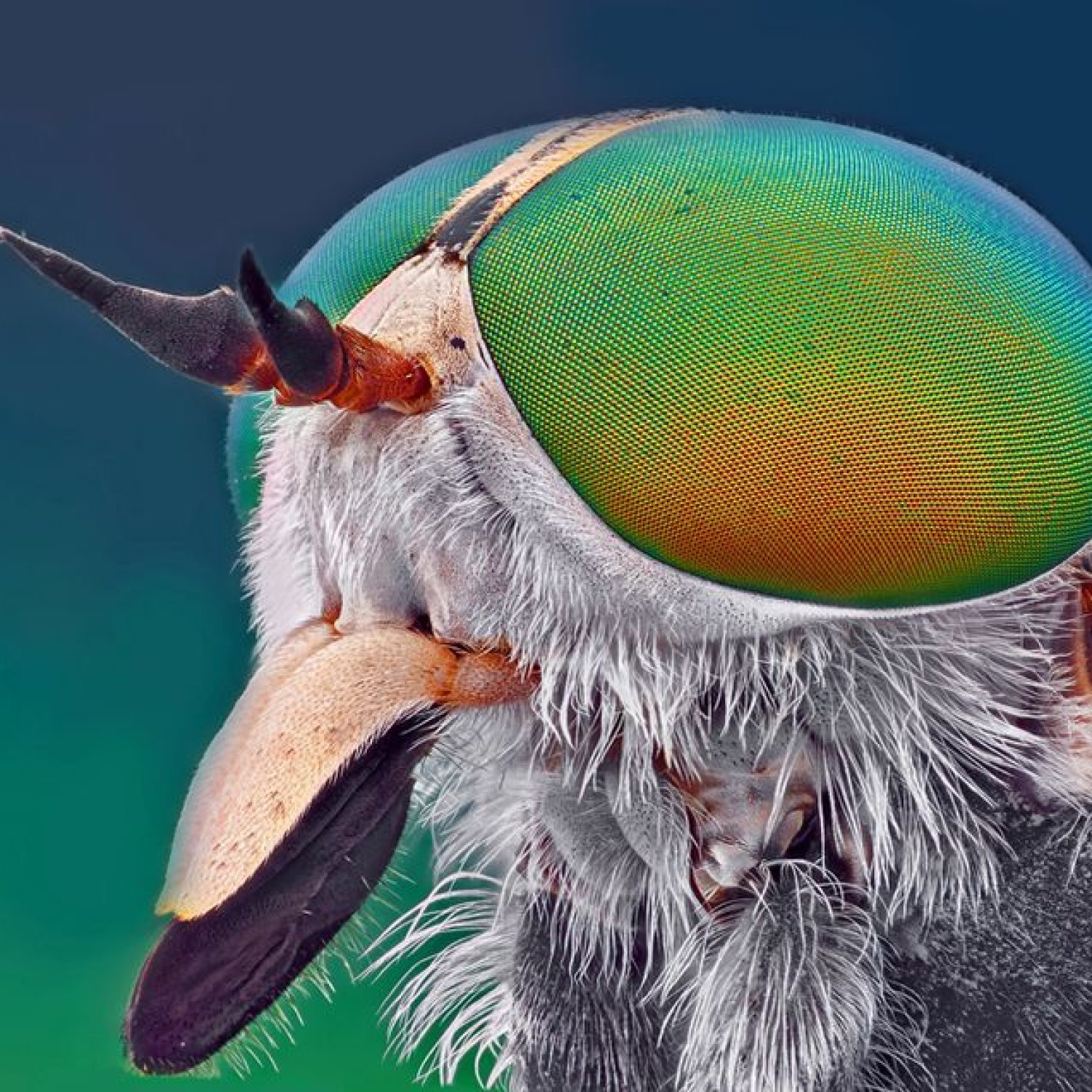
Horsefly
10 to 25 mm
The Horsefly is a common and pesky insect belonging to the Tabanidae family. Ranging from 10 to 25 mm in length, these robust creatures have large eyes and a proboscis for sucking blood. Their habitat varies, making them a nuisance in many places. Protect yourself and your animals from these buzzing creatures by using insect repellent and covering exposed skin.
Animal Details Summary:
Common Name: Horsefly
Kingdom: Animalia
Habitat: Various habitats, including forests, grasslands, wetlands, and near water sources
The Mighty Horsefly: Nature's Bloodsucking Fly
The sound of buzzing and the feeling of a sharp sting on your skin can only mean one thing – the horsefly is nearby. These pesky insects are a common nuisance, especially during the summer months. But there is much more to them than meets the eye. In fact, the horsefly is a fascinating creature that plays an important role in its ecosystem Horsefly. Let's dive deeper into the world of this misunderstood insect and discover what makes it a unique and vital part of the animal kingdom.The Scientific Classification of the Horsefly
To fully understand the horsefly, we must first look at its scientific classification. The horsefly belongs to the kingdom Animalia, which includes all animals. Within this kingdom, it belongs to the phylum Arthropoda, which encompasses all insects, spiders, and crustaceans. More specifically, the horsefly belongs to the class Insecta, which includes all insects. Within the class Insecta, the horsefly falls under the order Diptera, which includes all flies and mosquitoes. Finally, the horsefly belongs to the family Tabanidae, which is a diverse group of about 4,000 species of bloodsucking flies.With such a diverse classification, it's clear that the horsefly is not just any ordinary insect. It has evolved over millions of years to become a successful and efficient predator in its ecosystem Hepatic Tanager.
The Versatile Habitat of the Horsefly
One of the most fascinating aspects of the horsefly is its ability to live in a variety of habitats. While they are commonly found near horses and other livestock (hence the name "horsefly"), they can also be found in forests, grasslands, wetlands, and even near water sources such as lakes and ponds. This adaptability to different environments is a testament to the resilience and resourcefulness of the horsefly.In fact, some species of horseflies are known to migrate long distances in search of suitable breeding and feeding sites. This makes them a truly widespread insect, with a global distribution.
The Feeding Behavior of the Horsefly
When it comes to feeding, the horsefly is not your typical insect. Unlike other insects that feed on nectar and plant sap, the horsefly is a hematophagous creature, meaning it feeds on blood. Specifically, female horseflies require a blood meal to produce eggs and continue the species' cycle.The horsefly's feeding behavior is quite unique. Firstly, they have large, compound eyes that provide them with excellent vision. This enables them to spot their prey from a distance. Once they have found a potential target, they use their sharp, needle-like proboscis to pierce the skin and extract blood. This process may be painful and irritating for the animal that is being fed upon, but it is essential for the horsefly's survival.
It is interesting to note that only female horseflies feed on blood, while male horseflies stick to a diet of nectar and plant sap. This is due to the fact that female horseflies require certain nutrients from blood to produce and lay eggs. Once they have laid their eggs, the female horseflies may continue to feed on blood or switch back to a vegetarian diet.
The Horsefly's Geographical Distribution and Country of Origin
The horsefly is a truly nomadic insect, with no specific country of origin. It is found in almost every region of the world, including the Americas, Europe, Asia, Africa, and Australia. Depending on the species, the horsefly may thrive in temperate or tropical regions, making it a truly versatile and adaptable creature.The Appearance of the Horsefly
The horsefly's appearance is unmistakable with its characteristic robust body, large eyes, and long proboscis. The body coloration of horseflies ranges from black to brown or gray, with some species having intricate patterns on their wings. These distinct markings may serve as a defense mechanism, making them less visible to potential predators.The size of the horsefly may also vary depending on the species, with an average length of 10 to 25 mm. While some species are relatively small, others can grow to be quite large, resembling small bees or wasps.
The Lifespan and Reproduction of the Horsefly
On average, the horsefly has a relatively short lifespan of 14 to 21 days. However, this varies depending on the species and environmental conditions. As mentioned earlier, female horseflies require a blood meal to produce eggs. Once she has fed and mated, she may lay up to several hundred eggs in clusters on vegetation near water sources.The eggs hatch into larvae, which then develop into pupae and eventually into adult horseflies. This process usually takes around 2-3 weeks. Interestingly, horseflies undergo a process called diapause, where they go into a state of suspended development during harsh weather conditions. This allows them to survive through cold winters and emerge as adults when the weather improves. This is an important adaptation that allows them to thrive in different environments and continue their reproductive cycle.
The Importance of Horseflies in Their Ecosystem
While many may see horseflies as pesky and annoying insects, they play an important role in their ecosystem. As predators, they help control the population of other insects, including mosquitoes and flies. They are also an essential food source for certain animals such as birds and bats, making them an integral part of the food chain.Additionally, the horsefly's role as a pollinator should not be overlooked. As they feed on nectar and plant sap, they inadvertently transfer pollen from one plant to another, aiding in the reproduction of plants and contributing to the diversity of plant species in their habitats.
How to Deal with Horsefly Bites
While horseflies play an important role in nature, their bites can be quite painful and irritating for humans and animals alike. If you find yourself being bitten by a horsefly, here are some tips to alleviate the discomfort:- Wash the affected area with soap and water to prevent infection.
- Apply a cold compress to reduce swelling and pain.
- Use over-the-counter anti-itch creams or hydrocortisone cream to alleviate itching.
- Avoid scratching the bite as it can lead to further irritation and potential infection.
In severe cases, a visit to the doctor may be necessary, especially if you experience severe pain, swelling, or an allergic reaction.
In Conclusion
In conclusion, the horsefly is a fascinating creature that has evolved over millions of years to become a successful and efficient hunter. Despite being a nuisance to humans and animals, they play a vital role in their ecosystem and contribute to the diversity and balance of nature. So the next time you encounter a horsefly, take a moment to appreciate its unique characteristics and important role in the natural world.

Horsefly
Animal Details Horsefly - Scientific Name: Tabanidae
- Category: Animals H
- Scientific Name: Tabanidae
- Common Name: Horsefly
- Kingdom: Animalia
- Phylum: Arthropoda
- Class: Insecta
- Order: Diptera
- Family: Tabanidae
- Habitat: Various habitats, including forests, grasslands, wetlands, and near water sources
- Feeding Method: Hematophagous (feeds on blood)
- Geographical Distribution: Found worldwide
- Country of Origin: No specific country of origin
- Location: Varies depending on habitat
- Animal Coloration: Ranges from black to brown or gray
- Body Shape: Robust body with large eyes and a proboscis for sucking blood
- Length: 10 to 25 mm
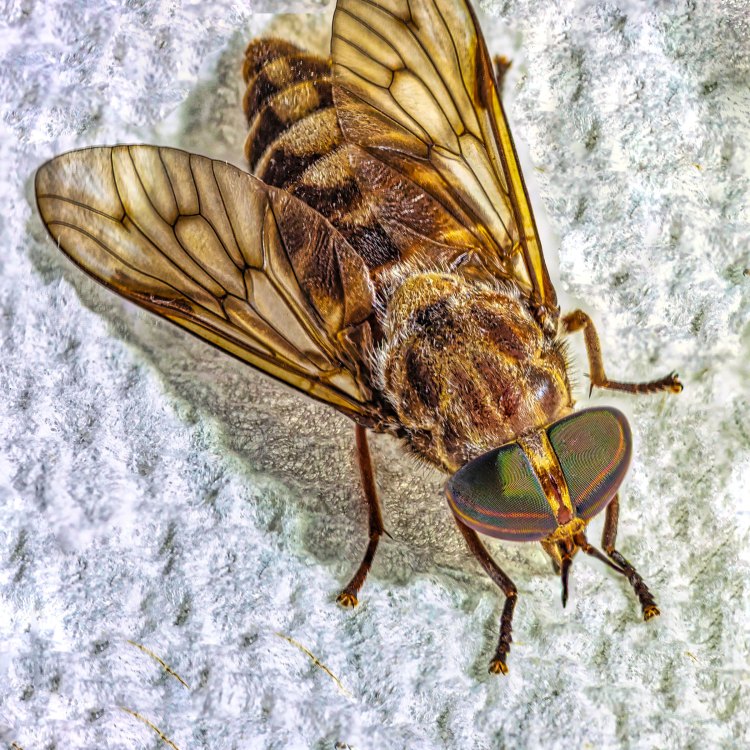
Horsefly
- Adult Size: Adult horseflies can reach a size of up to 25 mm
- Average Lifespan: Several weeks to a few months
- Reproduction: Sexual reproduction
- Reproductive Behavior: Mating occurs in flight, and females lay eggs on vegetation near water
- Sound or Call: No specific sound or call
- Migration Pattern: Some species of horseflies are known to migrate
- Social Groups: No specific social groups
- Behavior: Active during daylight hours, usually around dawn and dusk
- Threats: No significant threats to horseflies
- Conservation Status: Not assessed
- Impact on Ecosystem: Horseflies play a role in pollination as they feed on nectar from flowers
- Human Use: No specific human use
- Distinctive Features: Large size, robust body, and large eyes
- Interesting Facts: Horseflies are known for their painful bites and are considered pests to livestock and humans
- Predator: Various predators, including birds, insects, and spiders
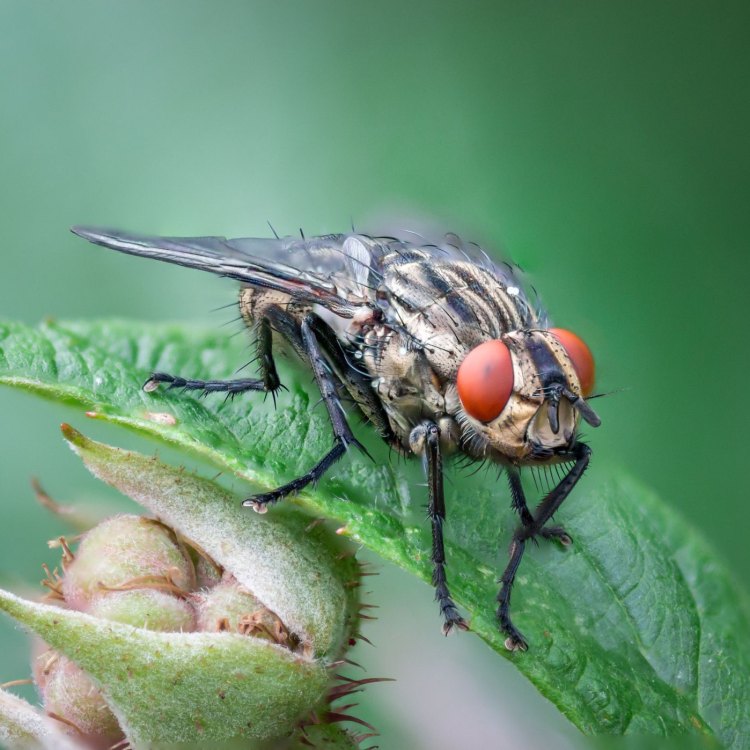
Tabanidae
The Mighty Horsefly: A Notorious Giant in the Insect World
In the vast and diverse world of insects, there are many remarkable creatures that often go unnoticed and unappreciated. But if there is one insect that stands out in terms of its size, behavior, and notoriety, it is the horsefly. These flying giants are a sight to behold, with their large size, robust bodies, and prominent eyes. But don't be fooled by their fascinating appearance, as horseflies are known to be aggressive and notorious biters PeaceOfAnimals.Com. In this article, we'll dive into the world of horseflies and explore their unique features, behavior, and impact on the ecosystem.Adult Size: A Flying Colossus
When it comes to size, horseflies are not to be underestimated. These insects can reach an impressive size of up to 25 mm as adults, making them one of the largest flies in the insect world. To put it into perspective, that's roughly the size of a penny or a quarter. And while their size may be intimidating, it's their bite that makes them truly stand out.
Average Lifespan: Time is Limited
Despite their size, horseflies have a relatively short lifespan of several weeks to a few months. The exact length depends on various factors, including species, climate, and food availability. But even with their short lives, these insects manage to make quite an impact on their environment.
Reproduction: Ain't No Fly Like a Horsefly
As with other insects, horseflies reproduce through sexual reproduction Hare. Females lay their eggs on vegetation near water, and once they hatch, the larvae develop in the water or moist soil. This unique reproductive behavior is an adaptation to their preferred habitat, as horseflies are often found near ponds, streams, and other bodies of water.
Reproductive Behavior: A Mid-Air Love Story
One of the most intriguing aspects of horseflies is their mating behavior. Unlike most insects, which mate on the ground, horseflies do it in flight. This spectacular display is a sight to behold, with the male and female flying together in a synchronized pattern. After mating, the female will search for a suitable location to lay her eggs, while the male continues to pursue other potential mates.
Sound or Call: Silence is Golden (or not)
Horseflies are not known for any particular sound or call. While most insects communicate through sounds, horseflies rely on visual cues and pheromones to attract mates and locate food. However, some studies suggest that horseflies may produce a low-frequency buzz during mating, but it is not prominent enough to capture human ears.
Migration Pattern: The Great Journey
While horseflies are not known for their long-distance migration patterns, some species do migrate in search of food and breeding grounds. This phenomenon is more common in temperate regions, where the weather changes can impact their survival. The exact distance and routes of migration are not fully understood, but it is believed that they can travel up to hundreds of kilometers.
Social Groups: Lone Flyers
In the insect world, social insects like ants, bees, and termites are often considered the most successful due to their ability to work together as a cooperative colony. However, horseflies do not have any specific social groups. They are solitary creatures that only come together for reproductive purposes.
Behavior: Busy Bees? Make Way for the Busy Flies
Horseflies are active during daylight hours, with their peak activity occurring around dawn and dusk. These insects are often most active on warm and sunny days, making them a common sight during the summer months. They are constantly on the move, buzzing around in search of nectar, blood, and mates.
Threats: The Horsefly's Only Enemy
In the insect world, there are always bigger and stronger predators lurking around, ready to make a meal out of their smaller counterparts. For horseflies, their main predators include birds, dragonflies, and other insects like wasps and spiders. However, these predators are no match for the speedy and elusive horsefly, making them less of a threat in the insect kingdom.
Conservation Status: Where Do Horseflies Stand?
Despite their large size and prominent presence, horseflies have not been assessed for conservation status. In fact, many people consider them a nuisance and even a pest due to their painful bites. However, like other insects, horseflies play a vital role in their ecosystem, making them an essential part of the balance of nature.
Impact on the Ecosystem: More than Just a Painful Bite
One of the most distinctive features of horseflies is their ability to feed on nectar from flowers. In doing so, they play a crucial role in pollinating plants and flowers, making them essential to the reproduction and survival of many plant species. Like other pollinators, horseflies help maintain the balance of nature and contribute to the health and diversity of their ecosystems.
Human Use: From Pest to Potential Medicine?
While horseflies may not have any significant use for humans, their saliva has been studied for potential medicinal properties. Researchers have found that horseflies produce a unique compound in their saliva that acts as an anticoagulant, which prevents blood from clotting while they feed. This compound could have potential uses in the medical field, such as in treating blood clots and heart disease.
Distinctive Features: Bigger is Better?
There's no denying that the size of horseflies is what sets them apart from other flying insects. On top of their large size, they also have a robust body and strikingly large eyes. These features not only make them an impressive sight but also serve a purpose in their survival. Their large eyes help them locate prey and avoid predators, while their robust body allows them to withstand harsh weather conditions and fight off attackers.
Interesting Facts: From Pests to Pollinators
While most of us may know horseflies as pests known for their painful bites, they have many other interesting facts that often go unnoticed. For starters, did you know that horseflies have been around for over 100 million years, making them one of the oldest insect families? They are also considered to be the fastest flying insects, with some species capable of flying at speeds of up to 90 km/h. And finally, despite their reputation as pests, horseflies have a crucial role in pollination and contribute to the delicate balance of ecosystems worldwide.
Predators: Even Giants Have Enemies
As mentioned before, horseflies have various predators in their natural habitat, including birds, insects, and spiders. Birds, such as swallows, flycatchers, and magpies, are known to catch and eat horseflies. Other insects, such as dragonflies and wasps, may also prey on horseflies, taking advantage of their slow flight and large size. And let's not forget about spiders, who have a knack for trapping unsuspecting horseflies in their webs.
In conclusion, the mighty horsefly may be an often-overlooked creature in the insect world, but they are without a doubt a force to be reckoned with. Their large size, robust body, and unique behavior make them a fascinating addition to any ecosystem. While they may have a bad reputation for their painful bites, we should not underestimate the crucial role they play in maintaining the balance of nature. So the next time you encounter a horsefly, take a moment to appreciate their unique features and remember that they are more than just a pest - they are a vital part of our ecosystem.
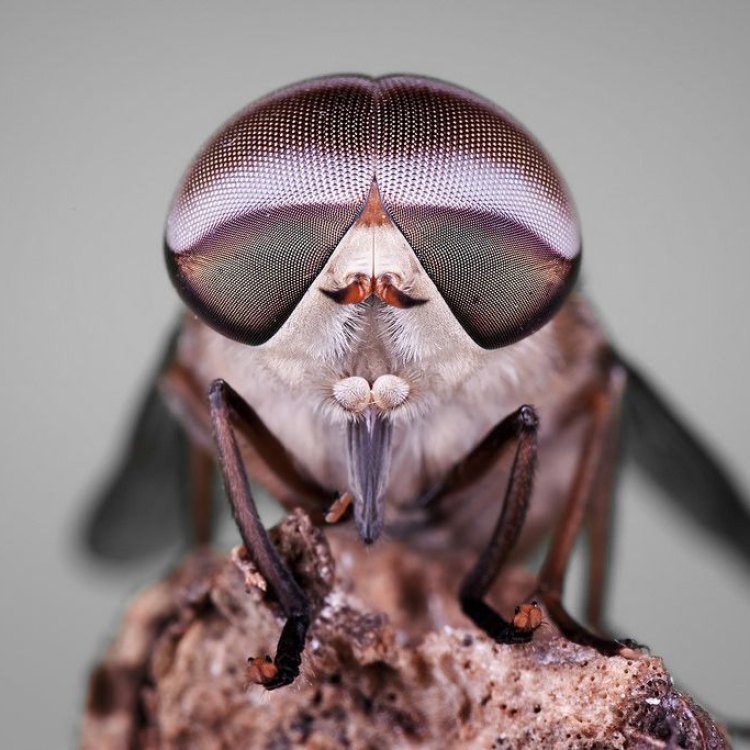
The Mighty Horsefly: Nature's Bloodsucking Fly
Disclaimer: The content provided is for informational purposes only. We cannot guarantee the accuracy of the information on this page 100%. All information provided here may change without prior notice.


